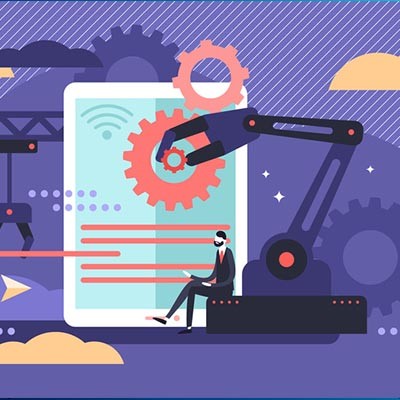Directive Blogs
Automation is Sure to Have an Effect on Workers
Automation does nothing but help businesses, but can the same be said for the people that work at these businesses? With more systems relying on some semblance of artificial intelligence, smart automation could replace up to a quarter of the current workforce over the next ten years. Today, we will take a look at the importance of profitability and how AI is likely going to usher in a whole new era of human existence.
Why Are More Things Being Automated?
Much of the western economy is theoretically based on the idea of competition. To succeed, businesses have to do whatever it is that they do better than their competitors. Automation provides a business the ability to streamline operations and reduce their costs, mostly by cutting payroll. They do this by automating repetitive jobs and replacing the people who are doing these jobs with machines.
The shocking part of this isn’t that businesses are doing what they are doing to get ahead, it's that people don’t properly understand what a business is trying to do. No matter what politicians and business owners say, the purpose of any business is to turn a profit. Only by making money can the successful business consider giving back to their community. The answer to “why are more things being automated?” is simple: efficiency and cost reduction.
How Does Automation Help Business?
Automating certain parts of a business can make a lot of difference. For example, a business needs to sell their product or service in order to take in revenue. Sales, as those who have worked in sales could tell you, is not a walk in the park. Traditionally, it has been long hours of gathering leads--making contact with these leads repeatedly to ascertain if they are actually a good fit to buy your products or services--getting turned away a lot--finally selling the product/service to a client--finalizing customer expectations/demands--starting workflow by filing work orders--following up on every sale to ensure every step of the process is being handled (billing, procurement/manufacturing, delivery, etc.)--following up with the customer to ascertain whether the product/service is working as expected and if they’d like to expand on their investment--starting the whole process over again.
There is software created to streamline a lot of these processes for the sales professional, and many businesses of all types, utilize this software to do just that. Making it easier on a company’s sales team to provide good customer results only strengthens their ability to create sales. Automation makes this all possible, and it cuts out a lot of the costs. All the points of contact every sale would need without sales automation software would likely cost the company hundreds of thousands of dollars per year, not just thousands. That is cost savings and that is the primary reason businesses are looking to automation to enhance their operations.
How Could Automation Be a Bad Thing for Workers?
Before we answer that question the facts are that automation will create millions of new jobs. That is true. The problem that workers are running into, however, is that those millions of jobs are created in completely different fields than the ones being automated. Take truck drivers for example. There is a push by many in the tech industry to create self-driving trucks that will be able to significantly cut down on shipping company’s operational budgets. Once these trucks prove that they can work for long-haul shipping, companies won’t need to hire truck drivers and the tens of thousands of dollars they cost these companies each year. The jobs created by automating these jobs are in the development of applications for powerful new software needed to run, direct, and manage these fleets of driverless trucks. Not many long-haul truck drivers are proficient in software languages, creating a major problem for these workers.
Trucking is not the only industry dealing with this type of problem. The more advanced automated systems become, the more human workers will be needed to develop and support these systems, leaving a surplus of unskilled workers left to compete with other unskilled workers for the entry-level jobs that remain; while simultaneously creating a deficit in the amount of coders there are. This is the major problem with this full force jump into automation.
If automation is going to work for both people and for businesses, there is going to have to be a structured settlement where these businesses, which are more profitable to invest some of these profits into the education of unskilled workers. Since, as we mentioned earlier, the only purpose any business ultimately has is to make larger and larger profits, it’s going to be difficult for unskilled or displaced workers to find jobs.
This problem isn’t new, but it is growing fast. The Brookings Institute estimates that around a quarter of all jobs could be automated today, especially in the food preparation, office administration, and transportation sectors of the economy. With only 40% of current jobs having a low-risk of automation, it will be interesting to see how this push to automate affects society.
The truth is that Directive uses automation everyday to benefit our clients and our technicians. If you want to know how we are automating some critical IT management tasks, reach out to us at 607-433-2200.



Comments